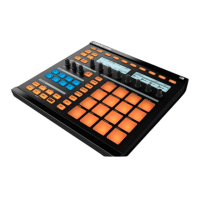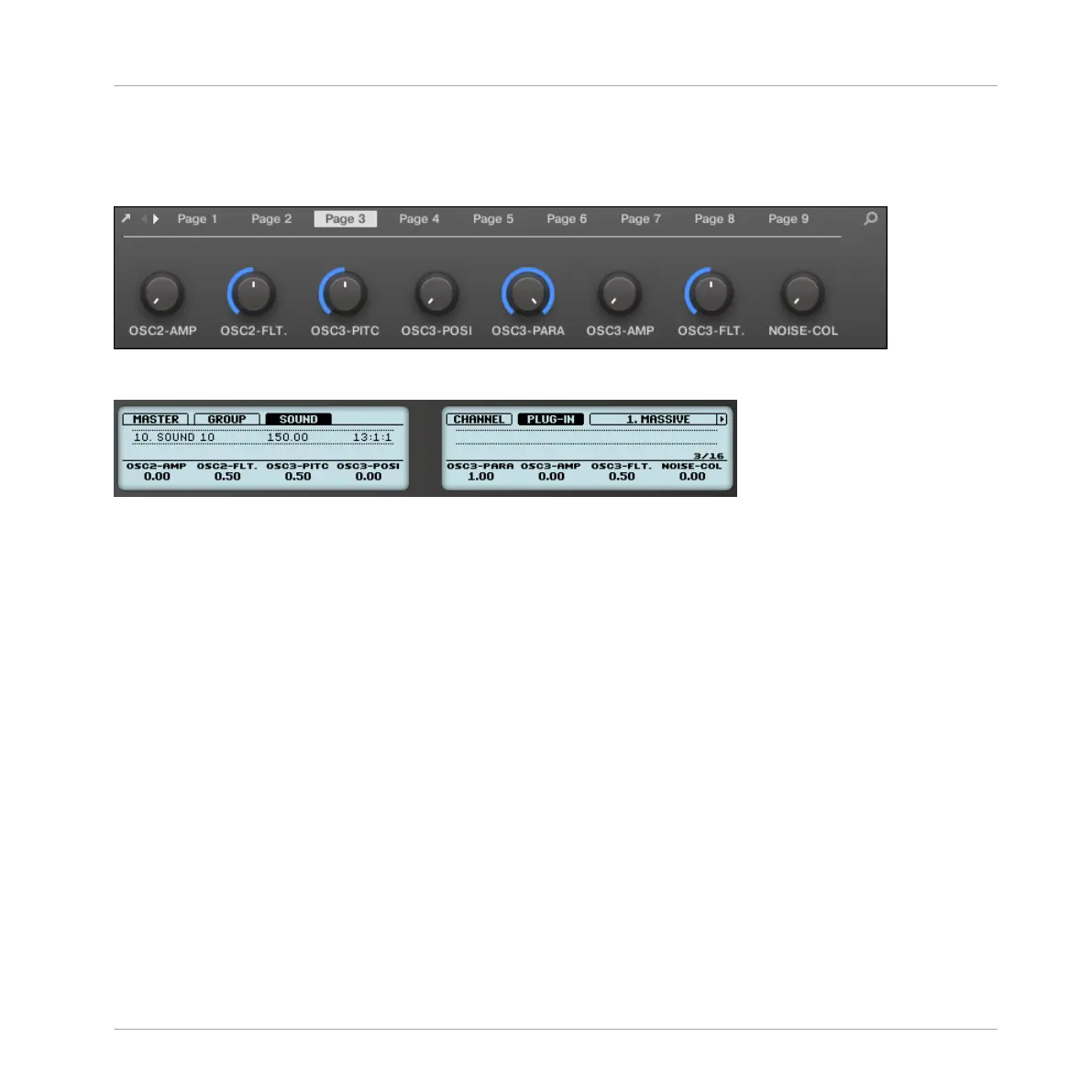▪ The current state of the Plug-in parameters can be saved to the Browser as a preset for to-
tal recall of the Plug-in (see section ↑6.1.9, Saving and Recalling Plug-in Presets for more
on this).
An auto-mapped Parameter page of the Massive Plug-in in the software.
An auto-mapped Parameter page of the MASSIVE Plug-in on the controller.
Furthermore, for Native Instruments Plug-ins these Parameter pages group the Plug-in parame-
ters in an intelligent way that fits the particular workflows of each Plug-in. For example in the
MASSIVE Plug-in, the eight Macro Controls of MASSIVE will be grouped into a single Parame-
ter page, the main parameters for Oscillator 1 will be grouped into another Parameter page,
etc.
6.3.3 Setting Up Your Own Parameter Pages
As with any Plug-in, the parameters of a Native Instruments or External Plug-in are organized
into pages. Each Plug-in can have any number of pages, each containing 8 knobs, which can
be assigned to the parameters of the VST/AU instrument or effect.
Parameter pages may be assigned automatically using auto-mapping (see section ↑6.3.2, Using
the VST/AU Plug-in Parameters above) or created individually via Learn mode. With Learn
mode, you can create custom pages containing only the desired parameters arranged to fit your
personal workflow. Moreover, you can create sections of parameters within each custom Pa-
rameter page, and define custom labels for parameters, sections, and entire Parameter pages.
Working with Plug-ins
Using Native Instruments and External Plug-ins
MASCHINE - Manual - 292

